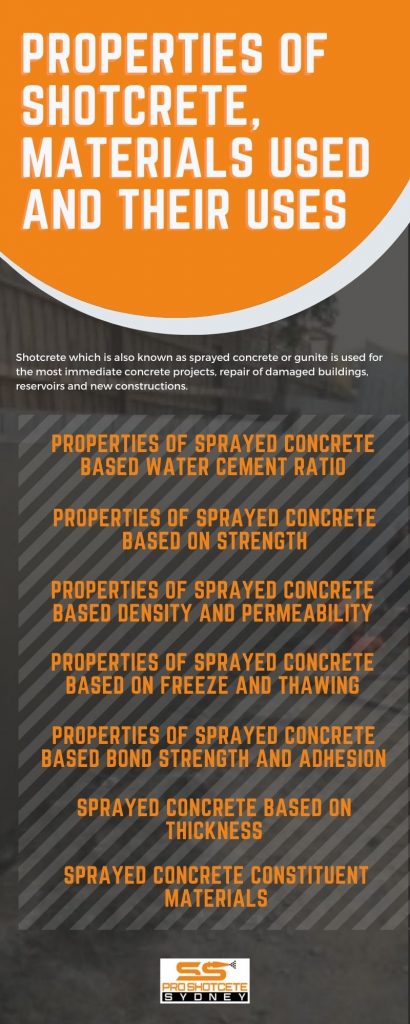-
Properties of Shotcrete, Materials Used and Their Uses
Shotcrete which is also known as sprayed concrete or gunite is used for the most immediate concrete projects, repair of damaged buildings, reservoirs and new constructions.
The application of sprayed concrete is conducted by a person, machine and concrete as the material.
The person who is assigned at the nozzle should have qualified skills and be dedicated to the task.
The coordination of the machine and the nozzle man should be of ultimate strength to govern the sprayed concrete.
History of Shotcrete or Sprayed Concrete
Sprayed concrete began in 1985 when Dr. Carlton Akeley was researching ways of making a device that can construct models of prehistoric animals.
The conventional method was difficult in designing skeleton shapes using a mortar. This made Dr. Carlton Akeley develop a device that was able to spray a mortar mixture.
The pressure chamber device that was developed would contain a mixture of water, sand and cement.
The device was pressurized with compressed air then sand and cement were sprayed out through the nozzle where they were hydrated with water and came out like a mortar.
The device would be named cement gun which worked based on the dry-mix process.
Later the device was altered into the true gun method which would mix all the three elements and pump them out with a wet process.

Properties of Sprayed Concrete Based Water Cement Ratio
The sprayed concrete has a lesser water-cement ratio as compared to poured concrete.
This is mostly observed in the dry process because sagging is avoided.
In the wet process, the plasticizer is used to obtain the low value of the water-cement ratio.
Properties of Sprayed Concrete Based on Strength
Sprayed concrete is said to increase strength at the early stages when the water-cement ratio is employed at the lowest.
When the compactions are sprayed with high velocity using batched materials, rapid strength is gained.
Sprayed concrete is believed to gain 30% extra strength as compared to poured concrete.
Properties of Sprayed Concrete Based Density and Permeability
We have seen when compaction is taking place there’s the presence of high-velocity application which makes the mix denser.
Once the mixture is denser and free from the void, there will be a decrease in the permeability of the sprayed structure.
Properties of Sprayed Concrete Based on Freeze and Thawing
An increase in permeability will result in freezing and thawing of the sprayed concrete.
Sprayed concrete can have high impermeability properties that are responsible for resisting freezing and thawing which reduces cracks and propagation.
Properties of Sprayed Concrete Based Bond Strength and Adhesion
Sprayed concrete can stimulate better bonding and surface tension with the substrate which reduces the use of coating agents.
Sprayed Concrete Based on Thickness
Sprayed concrete is in a fluid form which makes it possible to be sprayed in large volumes and at a high speed.
Retaining walls can be sprayed with mass once the excavation is completed. This helps to reduce thermal stress in the construction.
Sprayed Concrete Constituent Materials
Sprayed concrete can be applied using the dry or wet process and their materials can be ready-mixed, supplied or produced in the factory.
Below are some of the materials that are based on on-site batching.
Cement is one of the most used materials for sprayed concrete. In this case, Portland cement of class 42.5 and 52.5R are highly advised.
Up to You
Concrete is a more versatile construction material that has changed the industry of building all over the world.
Concrete functions together with formwork to give the structure the desired shape once the concrete is poured or sprayed.
pscsydney
